Photo Story: Behind the Scenes of SDSU’s Best-Kept Secret
Tucked among the towering pines east of San Diego is SDSU’s Mount Laguna Observatory. It’s a learning lab for budding astronomers — and bonus, in the summer it opens to the public with a Saturday night visitor program.
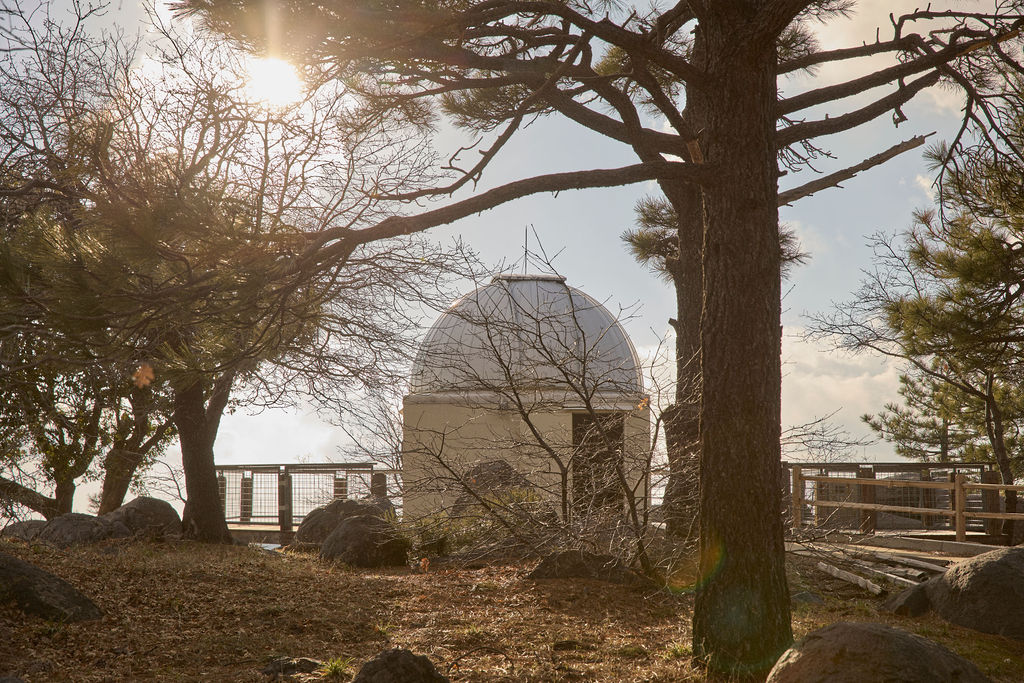
What are the best places for stargazing and space exploration in San Diego? The Fleet Science Center, the San Diego Air & Space Museum — both in Balboa Park — and Caltech’s Palomar Observatory quickly come to mind. But between mile markers 21.5 and 22 on Sunrise Highway, a scenic drive that cuts through the Laguna Mountains on the eastern edge of San Diego County, is a lesser known but equally captivating destination: SDSU’s Mount Laguna Observatory.
Founded in 1968, SDSU’s Mount Laguna Observatory is a research tool for the university’s astronomy department and its partners, which include the University of Kansas and the University of North Carolina. Four white domes, each with a large telescope inside, sit perched on the mountainside, views unobstructed by the surrounding pine and oak trees on the 5-acre property.
While MLO is closed to the public, it opens its doors every summer on select Saturday nights to visitors through a program led by master’s students that started about 30 years ago. In addition to completing their degree programs, these students conduct research, work as teaching associates and organize outreach events such as planetarium shows and star parties. They’re passionate about what they do, eager to educate new generations of astronomers and conscious that even the smallest act can have a big impact.
Just as MLO stands out as a humble powerhouse among its natural environment, this small group of astronomy master’s students plays a large role in the SDSU and surrounding community. From the classrooms at SDSU to the telescopes at MLO, here’s a day in the life of the astronomy department with graduate students Margo Thornton and Josh Bardwell.
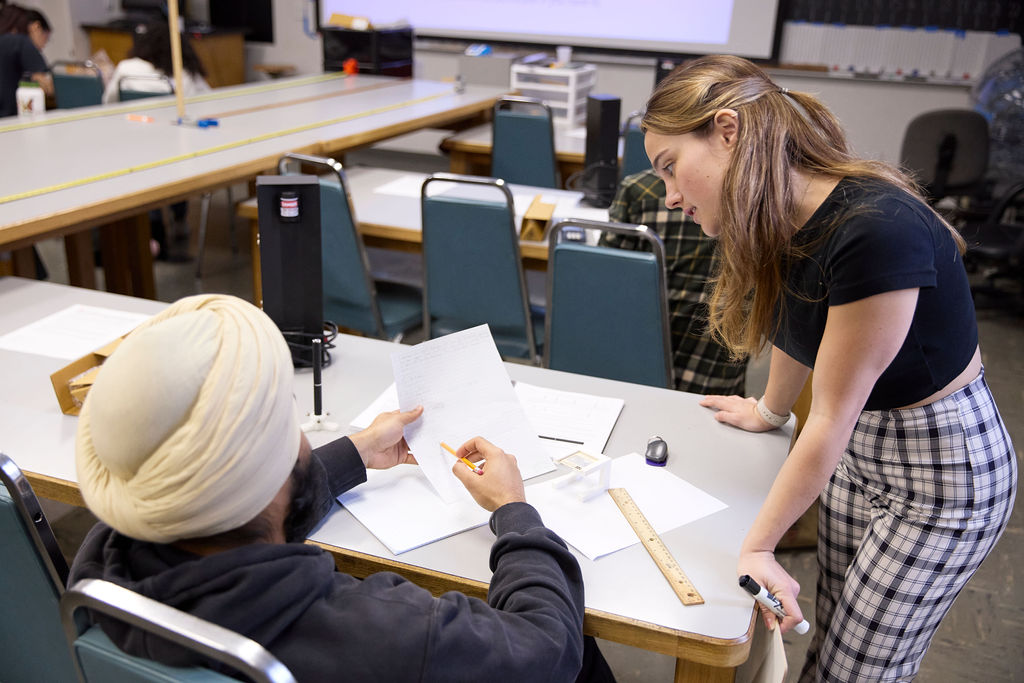
Thornton, a second-year astronomy master’s student shown here with senior Jusraunaq Farmahan, works as a TA in the astronomy department and loves “teaching people about this amazing subject,” she says. “I’ve become very passionate about communicating some harder topics to understand in a simplified way.”
After graduation in May, Thornton will pursue a Ph.D. “The main thing I hope to get across is that science is possible for anyone,” Thornton says. “And I want to show my younger self, the little girl watching ‘The Big Bang Theory,’ that she can soon understand what they’re talking about in the show.”
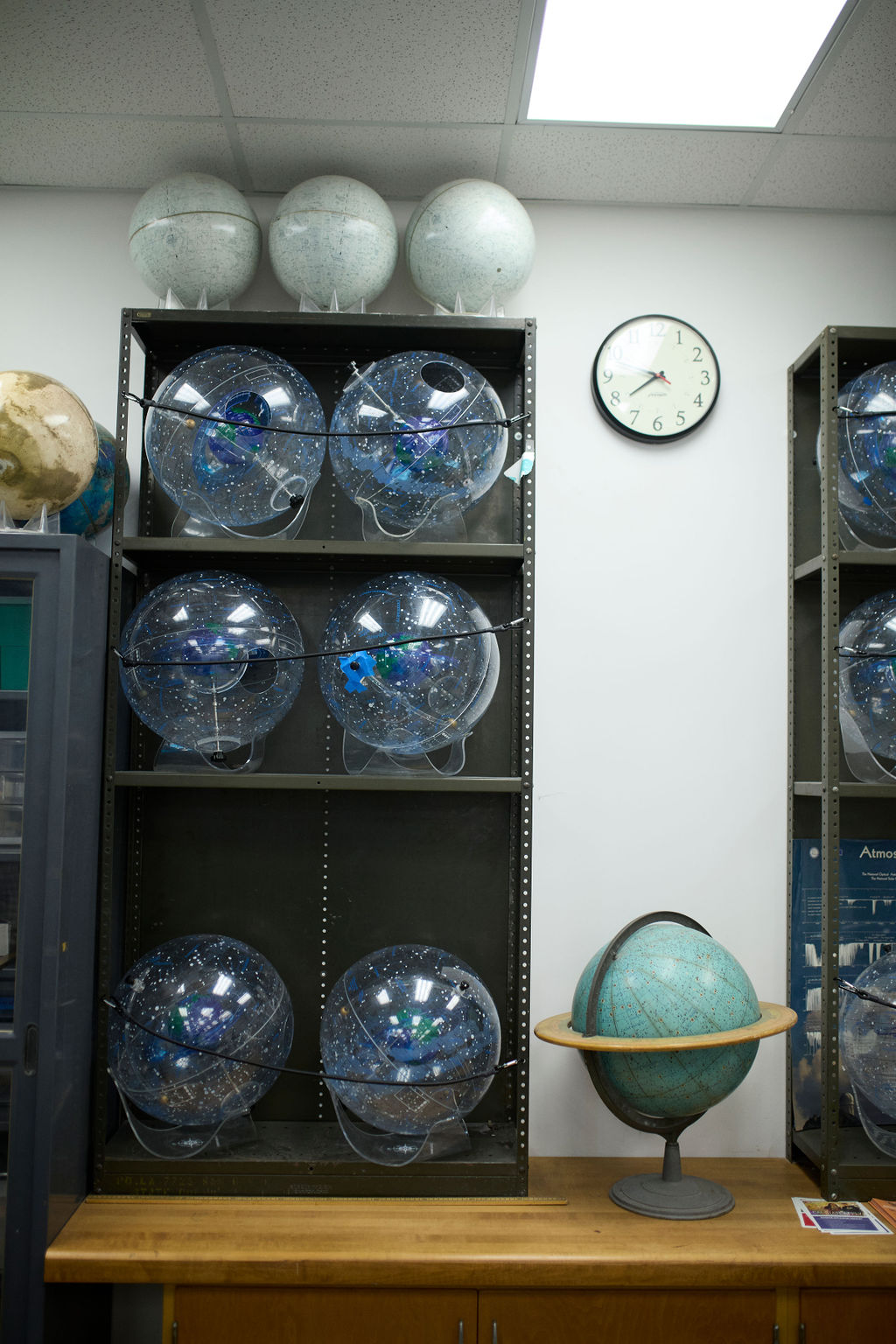
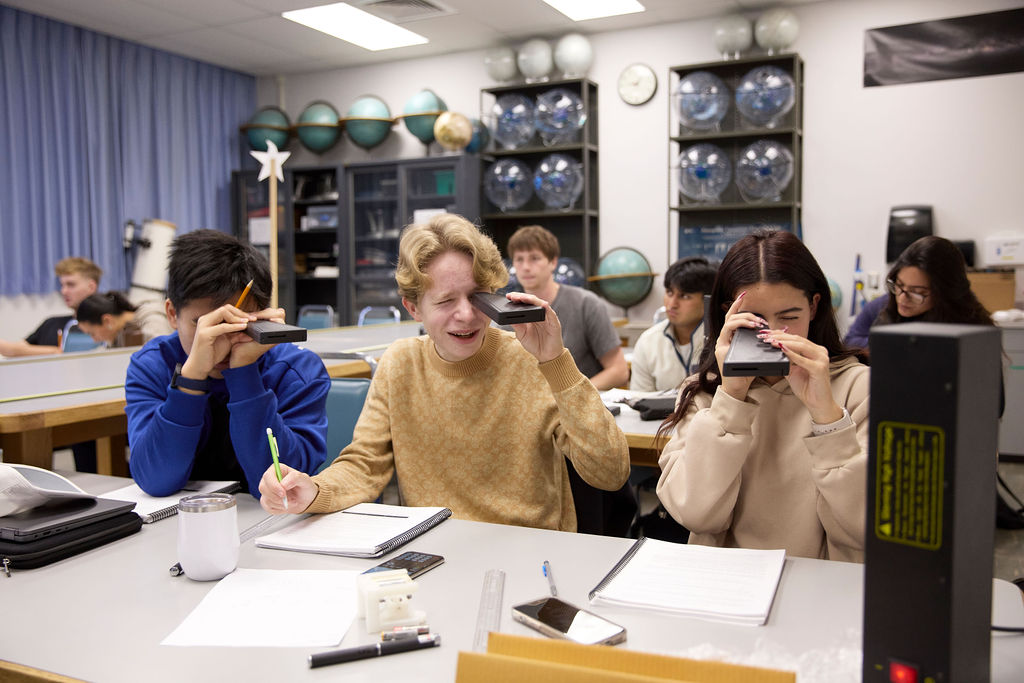
In Thornton’s Astro 109 class, sophomores Tommy Zhang (from left), Kegan Moon and Katrianna Suarez use handheld spectroscopes to observe a spectrum of light emitted from excited gasses.
Thornton says she’s always touched when she sees how excited students get from witnessing firsthand the cosmic phenomena she taught them about in class. Once, a student took a photo of the Orion Nebula through a telescope’s eyepiece during a class trip to MLO and eagerly returned to campus the next week announcing that he was able to point to the night sky and show that nebula to his friends.
“I was so proud of him,” she says. “It was really cool to see that my students are taking it outside of the classroom, teaching people what they're learning and showing people what’s up there.”
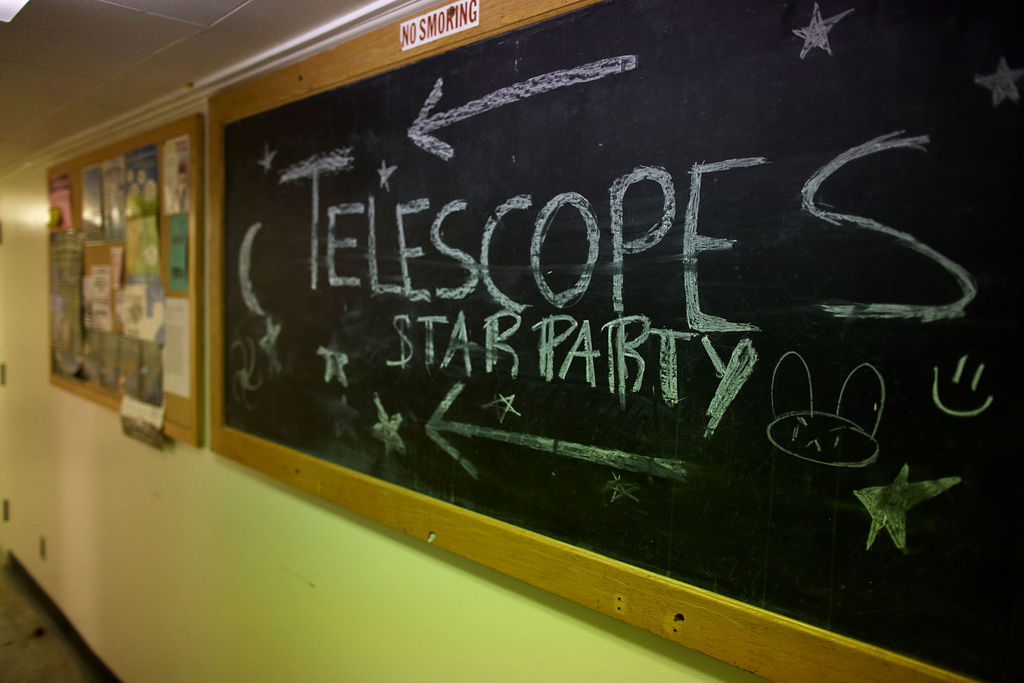
SDSU’s astronomy department and clubs like the Schwartz Astronomical Society regularly host star parties on campus. During these events, members of the school community gather to observe astronomical phenomena using tools like the department’s 8-inch and 10-inch telescopes, as well as the Unistellar eVscope 2, which can shed light on very faint celestial objects.
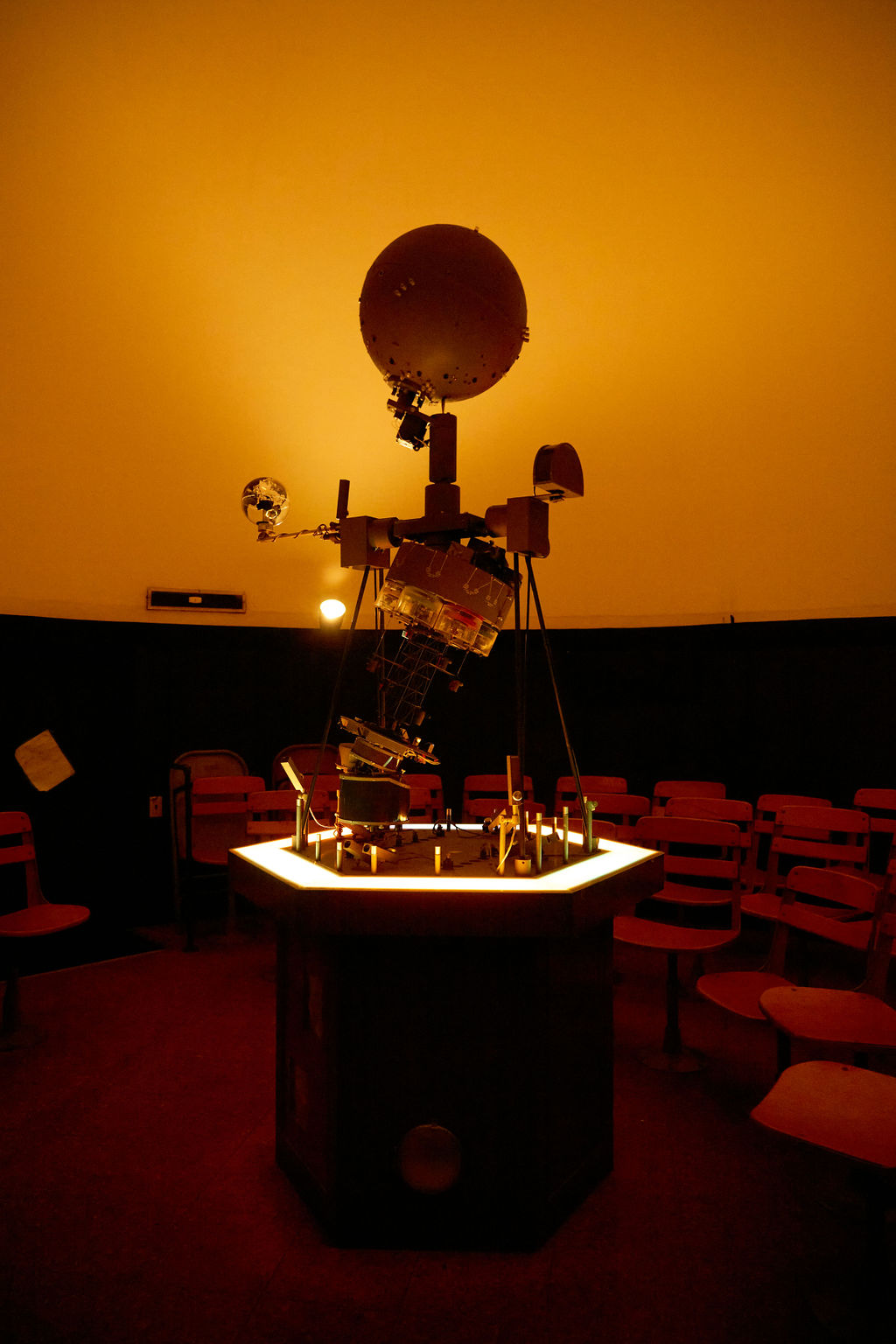
Master’s students also do a variety of outreach, including five to 10 planetarium shows at the start of each semester. During these hour-long planetarium shows on campus, grad students illuminate the domed ceiling with real data, projecting the actual positions of the moon, sun, stars and planets in various locations around the world and across different points of the day.
“The planetarium helps students orient themselves with respect to what we see in our night sky,” Thornton says. “It helps them understand how stars move and why they move the way they do.”
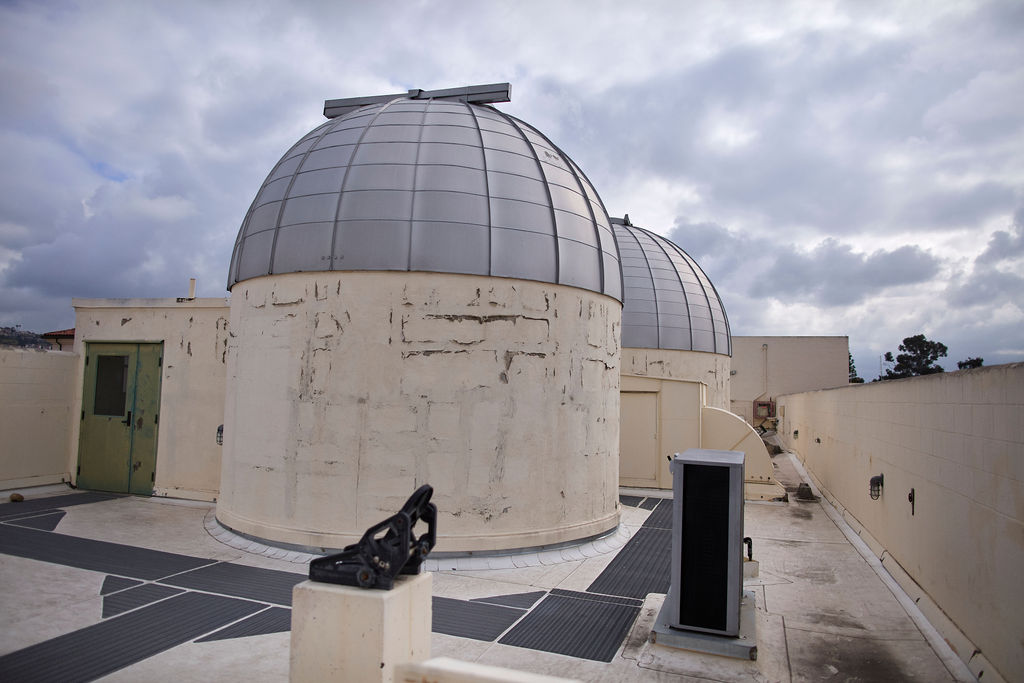
On the rooftop of the Physics/Astronomy building, sit three small observatories with big historic significance. The center dome originally housed a telescope that was used for the International Geophysical Year, an 18-month-long global collaboration that began in 1957 and involved a series of wide-ranging scientific studies conducted at the peak of the Cold War and start of the Space Race. The SDSU–based project, which aimed to refine the moon’s orbit, was funded by the U.S. Naval Observatory and carried out by the university’s inaugural astronomy majors, including professor emeritus Ronald Angione.
“Four of us were hired to take four photographs of the moon every four hours when it was visible,” Angione says. “We would develop the 8-inch square glass plates, identify and mark the stars whose positions were well-known, then ship the plates to the Naval Observatory in Washington, D.C., for measurement.”
After grad school, Angione returned to SDSU as a faculty member in 1969, the year the U.S. landed the first humans on the moon. The photographic camera used for this project is on display in the MLO museum.
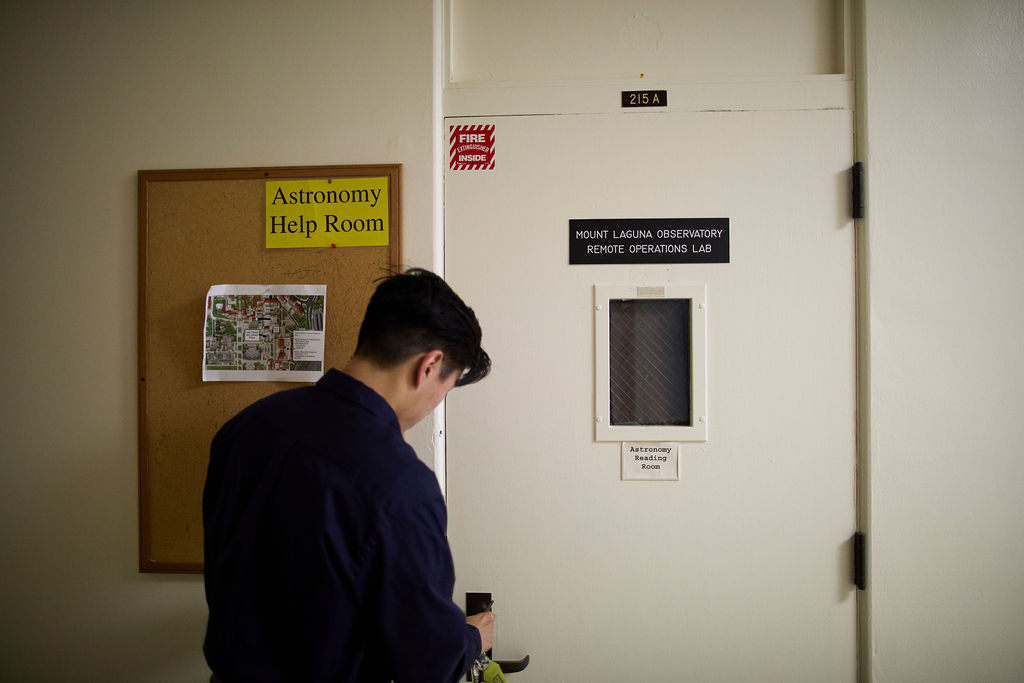
When MLO first opened 56 years ago, student and faculty researchers stayed in dorms onsite to conduct overnight research. However, researchers, like Bardwell here, can now remotely operate a 40-inch telescope at MLO from this nondescript room on the second floor of the Physics/Astronomy building.
“In addition to our large research telescopes at MLO, we have a system called Evryscope that consists of 20 telephoto lenses covering most of the observable sky all night, every night,” says Robert Quimby, director of MLO and professor of astronomy. “We use it to capture the first hints of light from distant novae and supernovae as they begin to explode.”
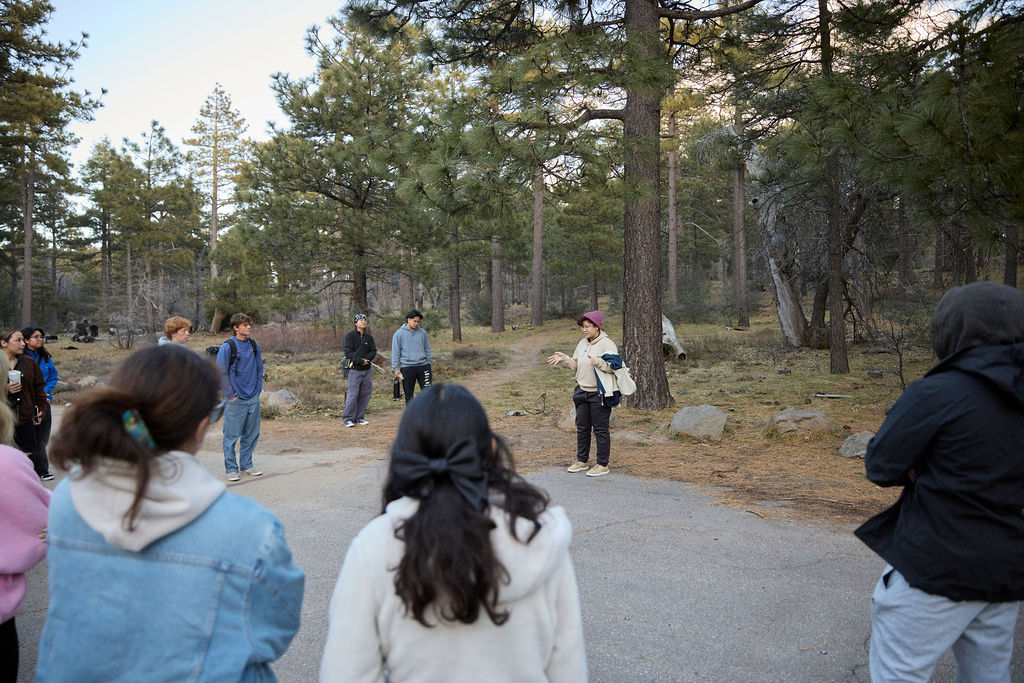
TAs, like astronomy master’s student Nissia Indradjaja in the pink beanie, make the hour-long drive from SDSU to MLO with each of their intro-level astronomy sections once a semester. They first meet at the dirt visitor parking lot below MLO to go over ground rules. These trips mark some students’ first time seeing planets through a telescope or even the Milky Way.
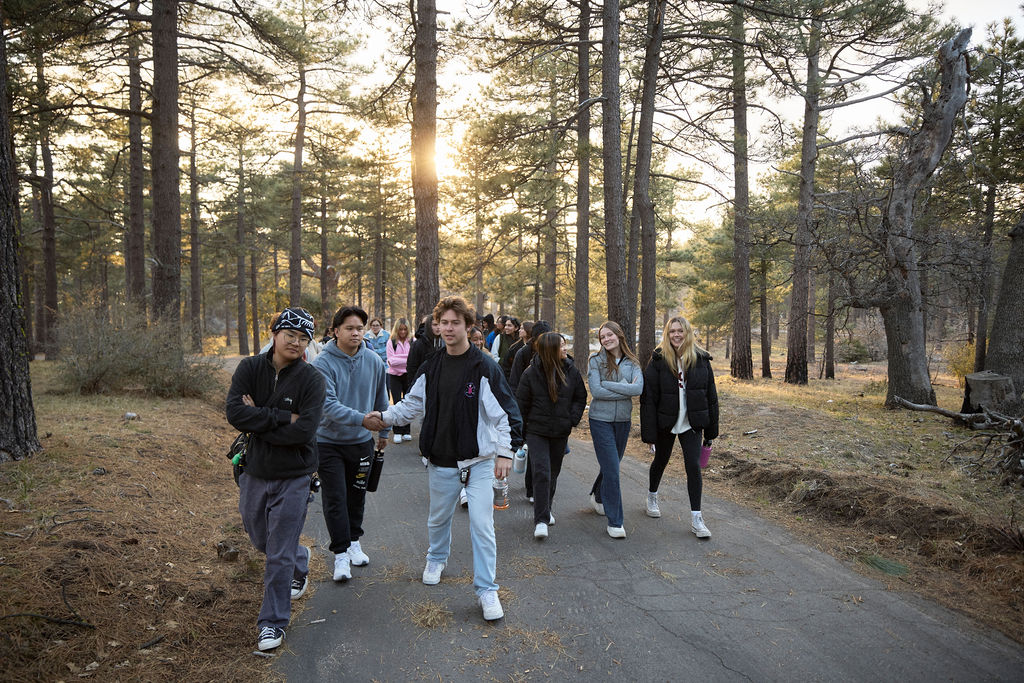
The short hike up to the observatory from the parking area gives students — including (from left in front) sophomore Bryan Deng, junior Steven Tacto and sophomores Layne Hawley, Belynda Adajar, Grace Haskins and Emilee Smith — a chance to get to know each other and prep for some astronomical firsts. “I’ve had students cry because it was just so beautiful,” says Thornton, who teaches two Astro 109 sections per semester. “In the fall, we can see Saturn, and they will climb up the ladder, look through the telescope and be like, ‘No way! That’s fake!’
“I still haven’t gotten over seeing Saturn at MLO,” she says, noting that the first time she saw the gas giant through a telescope was when she started teaching this class.
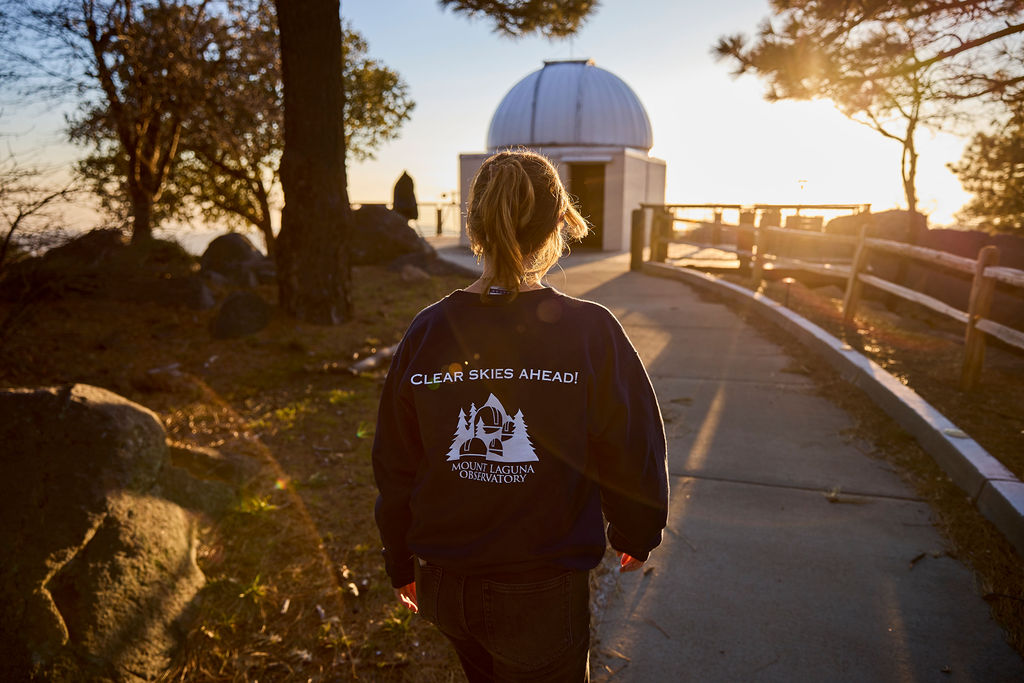
Thornton says she feels “like a new person” after her time at SDSU. Her confidence has grown as a result of diverse hands-on experiences, including conducting research using MLO telescopes and organizing outreach events. “This program has helped me in so many ways,” Thornton says. “I feel a lot more like this is what I’m supposed to be doing.”
A $14 million gift in 2021 from the late Theodore William Booth, a pilot with an interest in astronomy, and his late wife Nhung Lu Booth (’85), an alumna of the College of Sciences, gave the astronomy department a boost to attract top students like Thornton and Bardwell, both of whom are benefiting from this donation. The gift created opportunities for scholarships and funding to meet other student needs.
Says Bardwell: “For many of us, a master’s in astronomy includes getting involved in research, science communication and teaching opportunities — while taking a full load of graduate courses. This scholarship allowed me the opportunity to pursue all my passions and gain as much experience as possible during this ephemeral period of my life.”
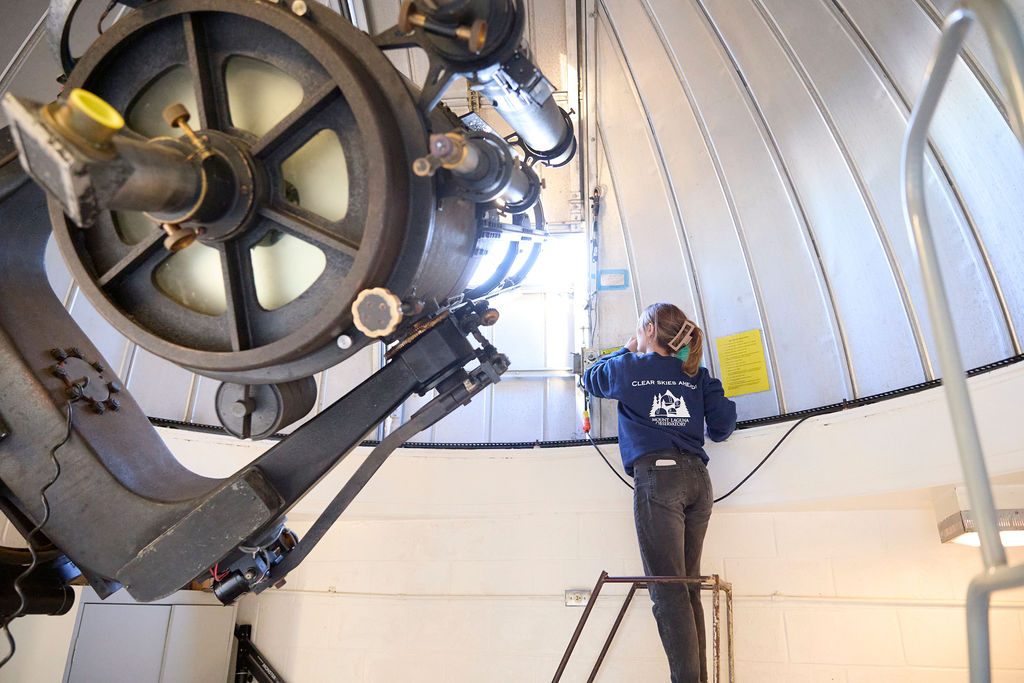
Thornton manually opens the dome and positions the 21-inch Reginald Buller visitor’s telescope to point at planets, stars and galaxies. Built in 1950 by J.W. Fecker Inc., the telescope alone (not including the cast iron base) is around 1,000 pounds of Pittsburgh steel and glass. It was donated to SDSU in 1988 by its original owner, Reginald F. Buller.
Quimby says, “Buller’s daughter Betty Buller Whitehead told me about observing with her dad in their backyard observatory. He was an astrophotographer, taking long exposure images of celestial objects through the telescope and developing the film himself.”
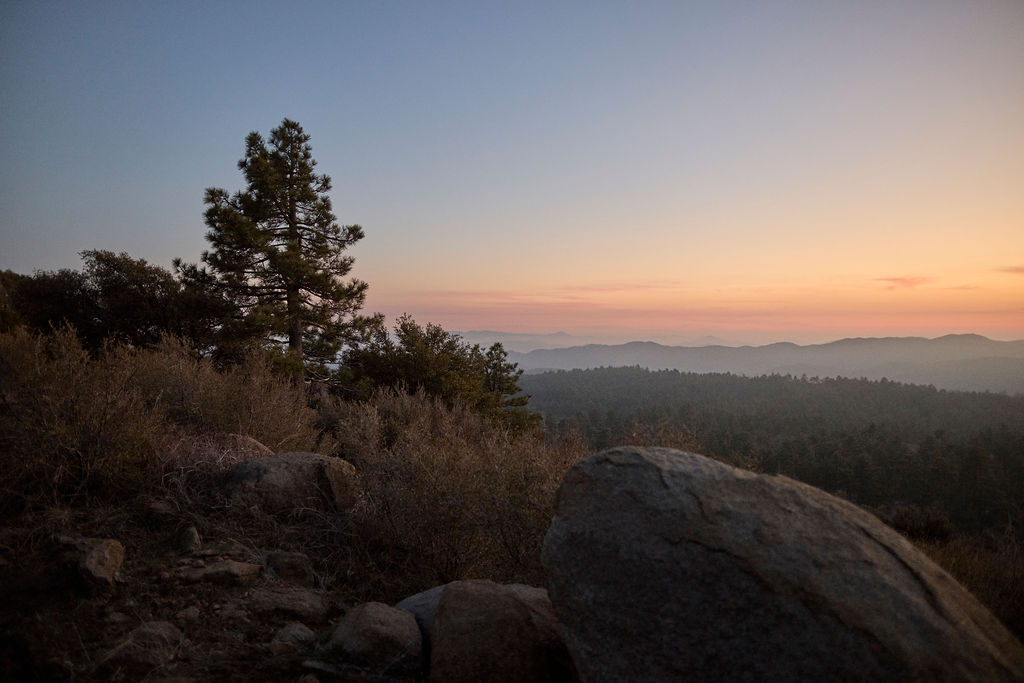
There is no shortage of sweeping views from MLO, and as a part of the 460,000-acre Cleveland National Forest, it’s also surrounded by more than 500 species of wildlife. “I’ve seen deer walking through, rattlesnakes warning me to stay away and deer mice that we occasionally need to evict from the telescopes,” Quimby says. “A couple times I have seen mountain lions in the area, and there are actually flocks of turkey near the road we walk up. Others have reported walking outside during an observing run to find cows from a neighboring ranch.”
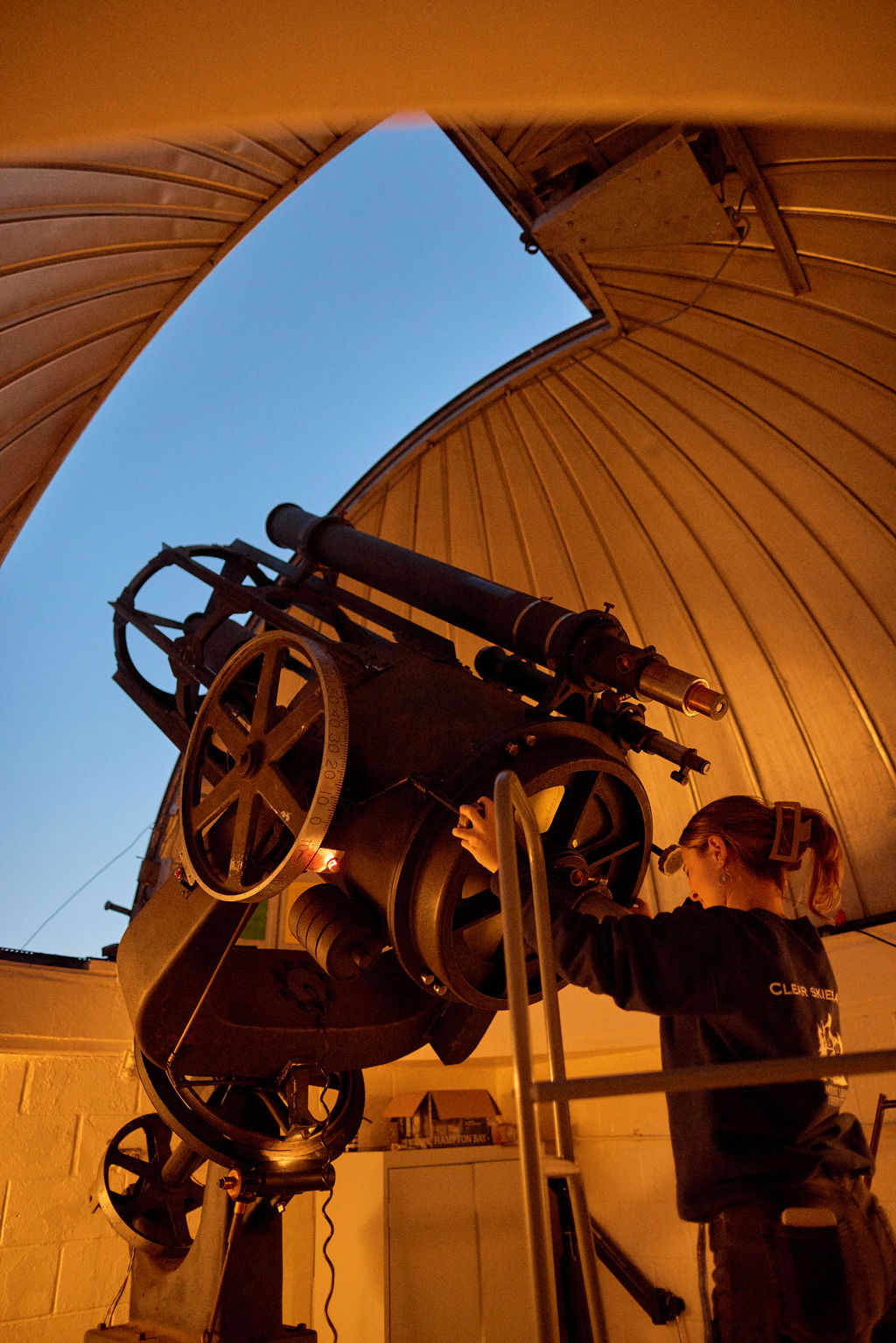
On select Saturday nights in the summer (weather permitting), master’s students put on a visitor program at MLO, welcoming the public to trek up the mountain and look beyond the world. Families, students and curious hikers take in the breathtaking landscape as the setting sun casts pastel hues onto the horizon. The night begins with a lecture, each week a different master’s student presenting a topic within their area of expertise. As night falls, it’s time for stargazing and spotting astronomical objects like galaxies, nebulae or planets using this observatory telescope.
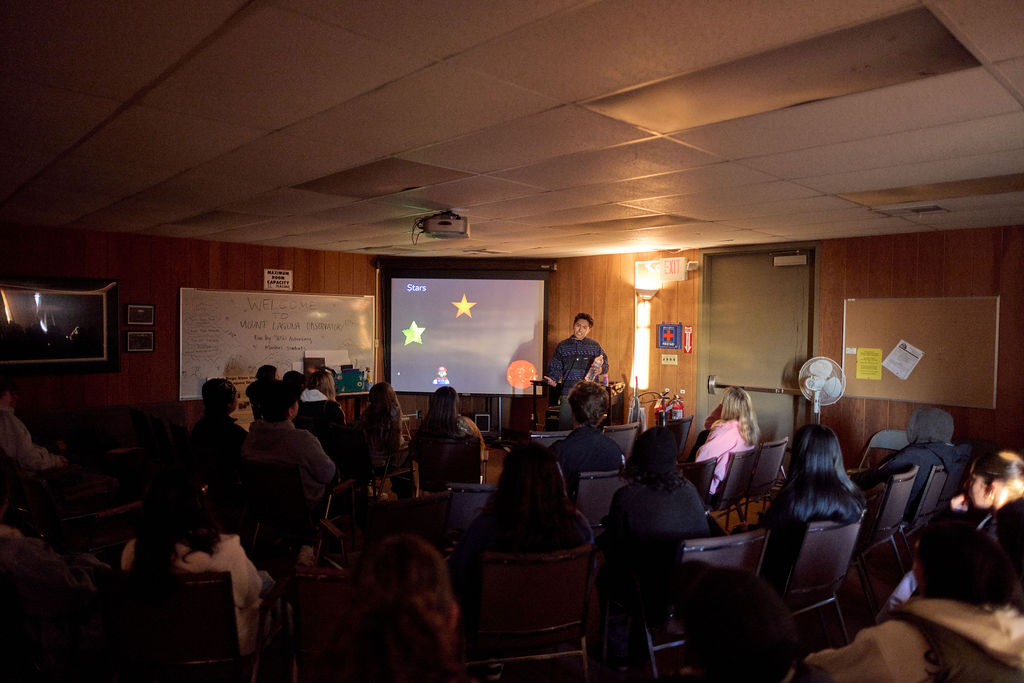
Bardwell, also a second year grad student, focuses his study on black holes and is advised by a postdoctoral researcher at NASA Goddard.
Bardwell and Thornton, an exoplanet specialist advised by SDSU professor William Welsh, both attended California Polytechnic State University, San Luis Obispo for their undergraduate degrees. The two met to discuss their plans for grad school while completing their degrees virtually due to the COVID-19 pandemic.
“Here at SDSU, you’re given so many opportunities to do really cool things,” says Bardwell, who started undergrad as a business major before switching to engineering. “Just being in grad school for two years, we led observatory lectures and star parties and outreach events, all things we looked up to our heroes doing.”
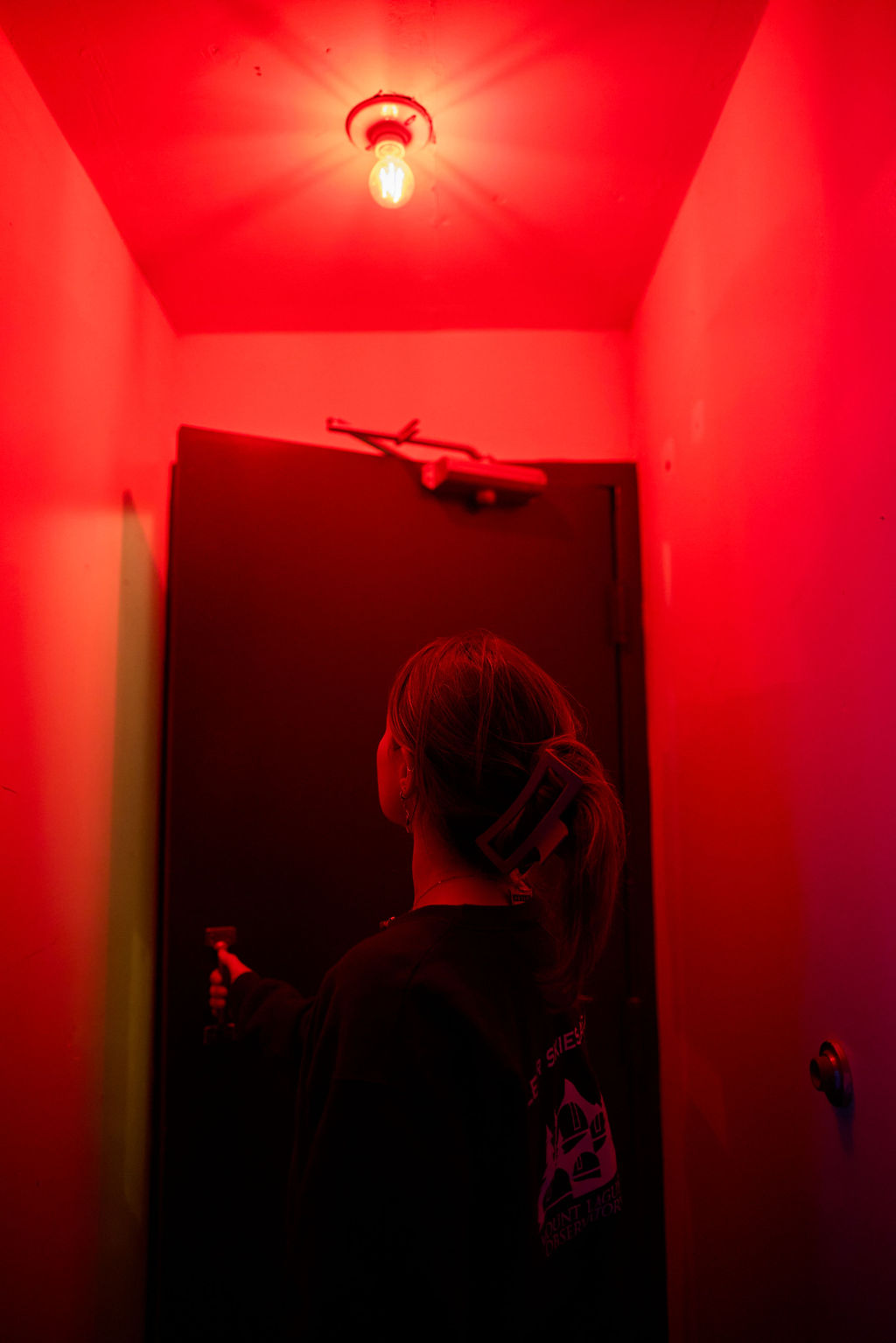
It takes about 20 minutes for one’s eyes to adjust to the darkness, allowing for better viewing of the night sky, and only seconds for white light to ruin the progress. Red lights like these help preserve night vision for Thornton and other stargazers.
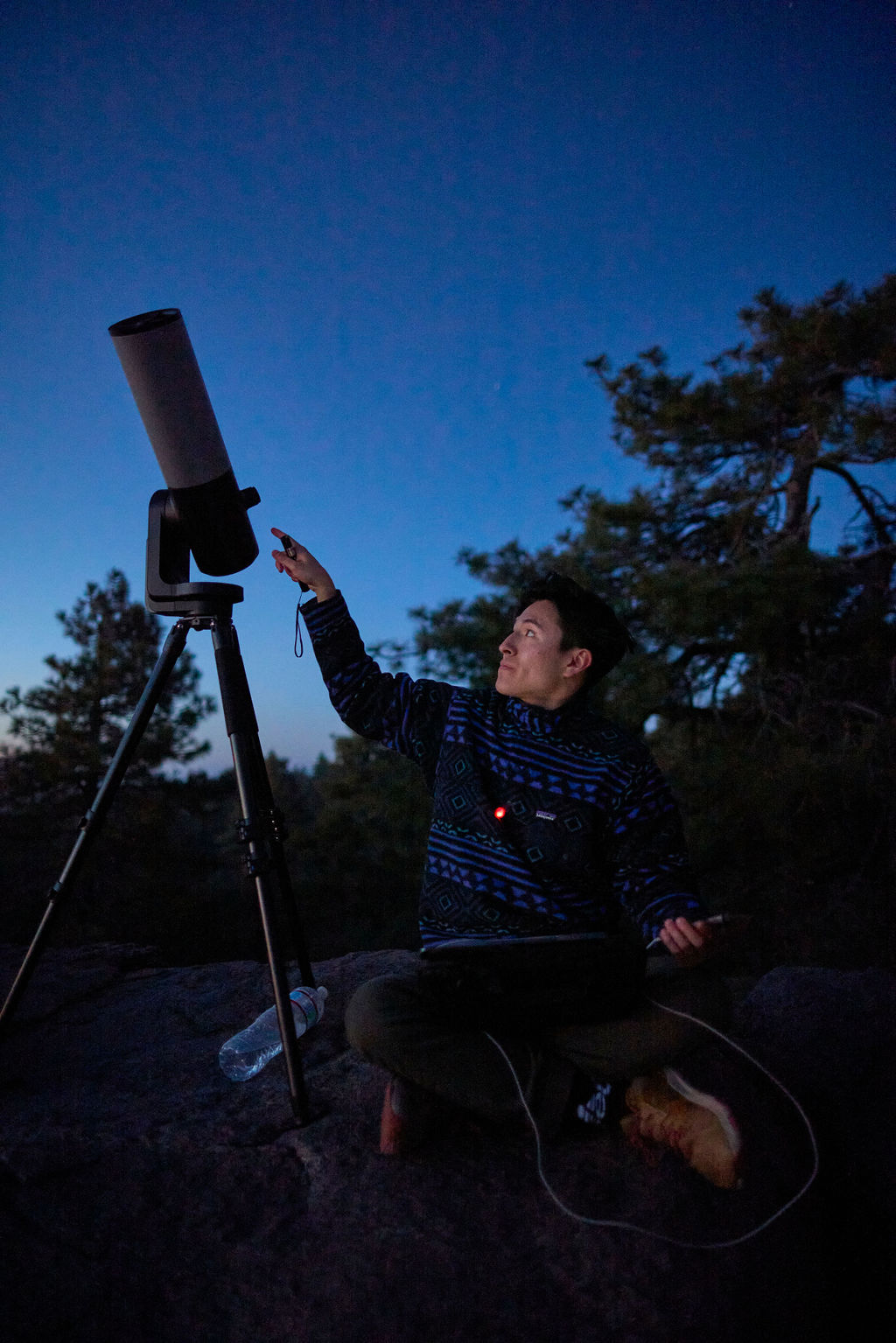
On one of the viewing decks at MLO, Bardwell calibrates an EV scope to the luminous Orion constellation, using a handheld laser to point out the Orion Nebula within it.
“Really complicated fields get extra barriers of entry because scary buzzwords like astrophysics get in the way,” Bardwell says. “That’s why science communication is so exciting to me, because watching someone, whether they’re at their oldest years of their life or their youngest years, getting super stoked about learning something new is just super cool.”
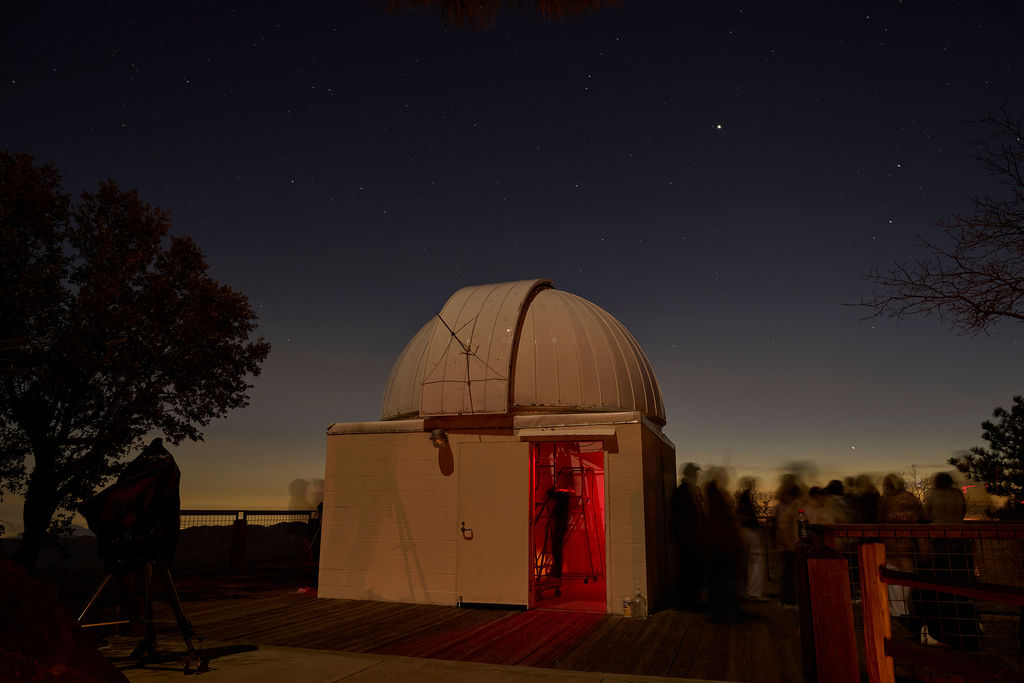
The summer visitor program this year starts Memorial Day weekend and runs through the peak of the Perseid meteor shower in August. But it's important to call the information line below first to be sure it's scheduled that night.
Thornton and Bardwell still plan to work at least a few of the programs this summer, before moving on to their post-graduation chapters. Bardwell even led the design of new merch that will be sold in the observatory’s cash-only gift shop.
“All of the people working the summer visitor program are eager to answer questions; they love talking about space, and they think there’s no such thing as dumb questions,” Thornton says. “When we tell people tiny little facts about what they’re looking at through the telescope, they connect what they learn to what they are seeing. In that moment, they are doing science, they are astronomers.”
Discover for Yourself
Call 619-594-1415 for details about the MLO Summer Visitor Program and learn more about the SDSU astronomy department below.
